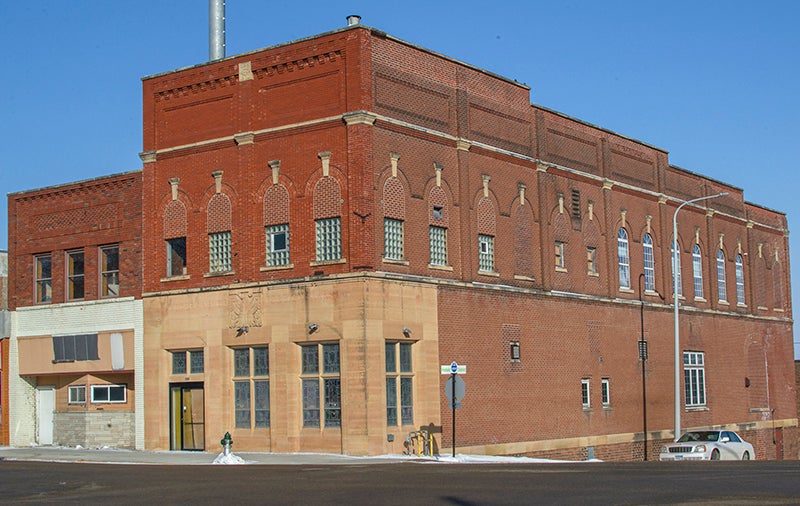Council votes 4-3 against bid to fix former VFW building
Published 9:24 am Tuesday, October 24, 2023
|
Getting your Trinity Audio player ready...
|
The Albert Lea City Council voted 4-3 Monday against accepting bids for the stabilization of the former VFW building on Clark Street, which has fallen into disrepair.
The city previously spent $102,000 in engineering and emergency shoring on the building, at 137 E. Clark St., when portions of the building started falling off into the alleyway behind the building.
While the low bid from American Homes LLC of Albert Lea was for $232,284, City Manager Ian Rigg said additional funding would likely be needed for contingency, asbestos removal and continued shoring equipment rental. The vote would have allowed for no more than about $394,000 to be spent in total for the project, including rebuilding the north wall facing the alley, installing a new roof and repairing the east wall facing Newton Avenue.
Sixth Ward Councilor Brian Anderson said with such a high cost, he would have preferred getting more public input before bringing the issue to vote.
He said he was not in favor of demolishing the building but was in favor of opening the issue up to the public forum.
Albert Lea Mayor Rich Murray said he was also in favor of having more time before the issue was called to vote to see if there is something different the council could be doing with the current owners, Clark Street East LLC, or to get the property into someone else’s hands who is more capable of fixing the building than the current owner. The repair work wouldn’t be completed until spring.
Murray also asked where the money was going to come from for the repairs.
Rigg said the money could come from the city’s economic development fund, though the repairs thus far have come through the city’s blight fund.
In addition to Murray and Anderson, Fourth Ward Councilor Sherri Rasmussen and Fifth Ward Councilor Robert Rasmussen voted against moving forward with the bid, while Councilors Rachel Christensen, Larry Baker and Jason Howland voted in favor.
Baker said it is unfortunate buildings like this one have gotten to their current state, but noted if the city lets them go and tears them down, that will mean a lot of empty spaces and parking lots and what he described as a “blighted downtown.”
He said with the improvements that have happened downtown since 2013, and with the city having one of the largest intact historic districts in the state, he thought not saving the building would do the city a disservice.
“It’s in our best interest to continue going forward in trying to save these buildings,” he said.
Howland said the project was not unlike others the city has had to step in and provide assistance to, including the former Hobby Shop building, where it had to put on a new roof for $200,000.
“Now that building is still there, and it’s going to be used,” he said.
Current plans for the VFW building call for turning the space and the neighboring building into 16 housing units, and the project has been approved for potential historic tax credits upon completion.
Work on the space, however, has been stalled, and Rigg said the owners are also three years behind on their taxes. After five years of not paying taxes, the owners could lose the building, and at that point, it would likely come back to the city through tax forfeiture.
Rigg said council is slated to vote on assessing the $102,000 the city has already spent on the project likely at its next meeting, and then the remainder would be assessed after the project is completed. The owners would have one year to pay it back. The owners have signed to waive their rights and assess any and all repairs.
The city manager compared the project to others the city has done through its demolition diversion program, where it takes the money it would have spent on demolition and puts it into repairs of the building before returning it to the private market — though he recognized the biggest difference in this case was cost.
Rigg said the city has already spent $102,000, and if the city were to just demolish the building, that would be at least $250,000 more for a combined $350,000. If they took contingency costs out, the total costs for the repair and demolition would be the same.
Murray said he was worried that the owners, of Apple Valley, wouldn’t be able to pay back the money and said if they had the means, they would have already been doing it.
“We said after the last one and probably the one before that that we’ve got to quit spending all this money on fixing these buildings up,” Murray said.
He said the city will be stuck for another two years until it could get the building back or try to find someone else who has the wherewithal for it.
When considering whether to delay the vote to the next meeting, Baker asked if anything would change in that time period, noting it wasn’t likely they could find someone that quickly who would want the building and the owners wouldn’t all of the sudden be able to come up with the money.
Rigg said the city is increasing its efforts to keep the downtown buildings in good condition through grants, which now include for roofs, and through stricter inspections enforcement.
“The more that we can do to spend in prevention, the better off we will be because what could have fixed this was maybe $40,000 10, 15, 20 years ago,” he said. “Fixing that roof would have prevented this very expensive problem now, and I think it just goes to show the importance of building inspection, historic preservation and us providing the funding necessary to incentivize these improvements as best as we can within limitations of public purpose.”









